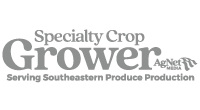
Effective nutrient management is essential for permanent crops, especially as trees and vines emerge from dormancy and begin their growing cycle. Dylan Rogers, a sales account manager for AgroLiquid in California, recently shared insights on the importance of phosphorus and calcium, along with other key nutrients, in crop health and productivity.
Phosphorus plays a critical role in energy production and root development. As crops wake up in early spring, new root flushes emerge underground, making it crucial to have phosphorus available in the soil. Ensuring a phosphorus source that resists tie-up and remains accessible can support robust root growth and overall plant vigor.
Calcium is equally important, contributing to cell structure, disease resistance, and fruit quality. While growers often apply calcium through bloom sprays and early nitrogen applications, maintaining appropriate calcium levels throughout the season is key to healthy plant development.
Traditionally, phosphorus and calcium are not applied together due to chemical incompatibility. However, Rogers explained that AgroLiquid’s nutrient technology enables these nutrients to be mixed without issue, providing growers with a more flexible approach to nutrient application.
Beyond phosphorus and calcium, understanding nutrient interactions is critical. Soil chemistry can influence how nutrients behave, sometimes limiting availability to crops. For example, excess calcium can tie up phosphorus in the soil, while high sodium levels in irrigation water can reduce potassium uptake, potentially leading to leaf burn and crop injury. Regular soil testing helps identify these issues, allowing for more precise nutrient management.
Rogers also emphasized the role of sulfur, which enhances nitrogen efficiency and helps lower high soil pH. Many growers use sulfur-based products to improve soil conditions and optimize nutrient uptake, making it a valuable tool in overall soil management strategies.
Finally, Rogers discussed the need for growers to adjust yield expectations and fertilizer budgets based on actual fruit set each season. With tight budgets, it’s important to manage inputs efficiently while still supporting future yields. Over-cutting fertilizer can harm next year’s crop, making it essential to strike the right balance.
You can find more information at agroliquid.com.










